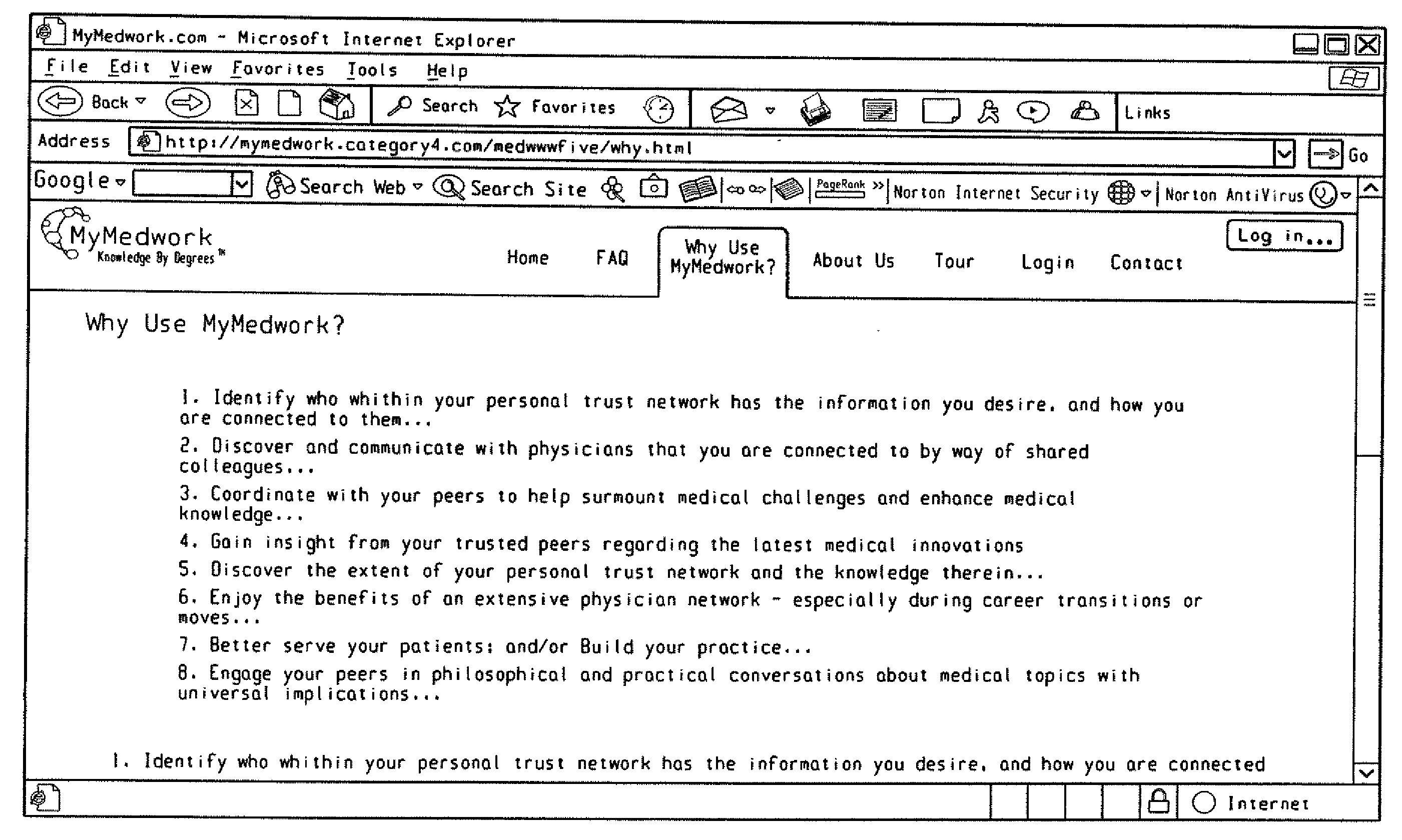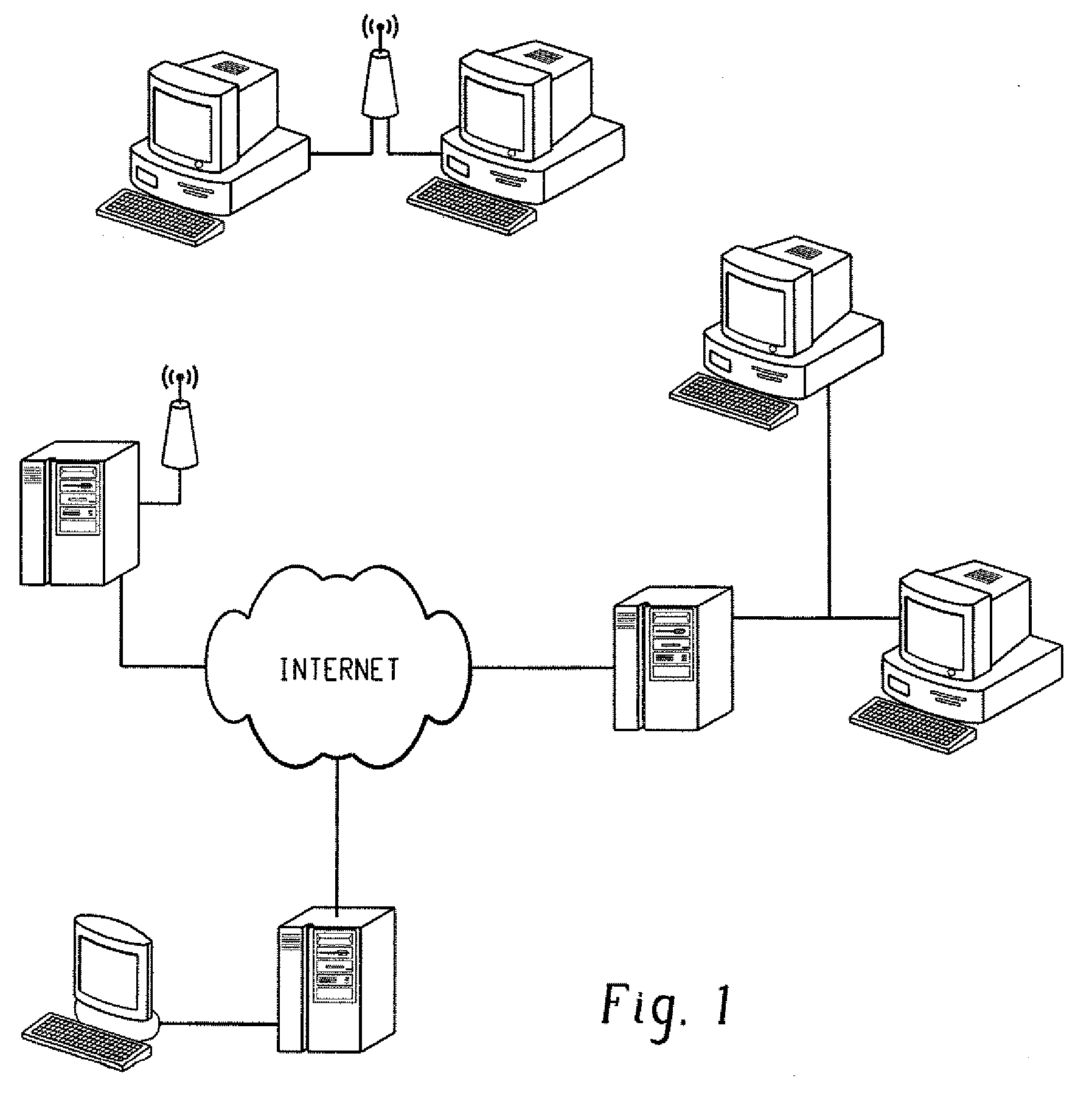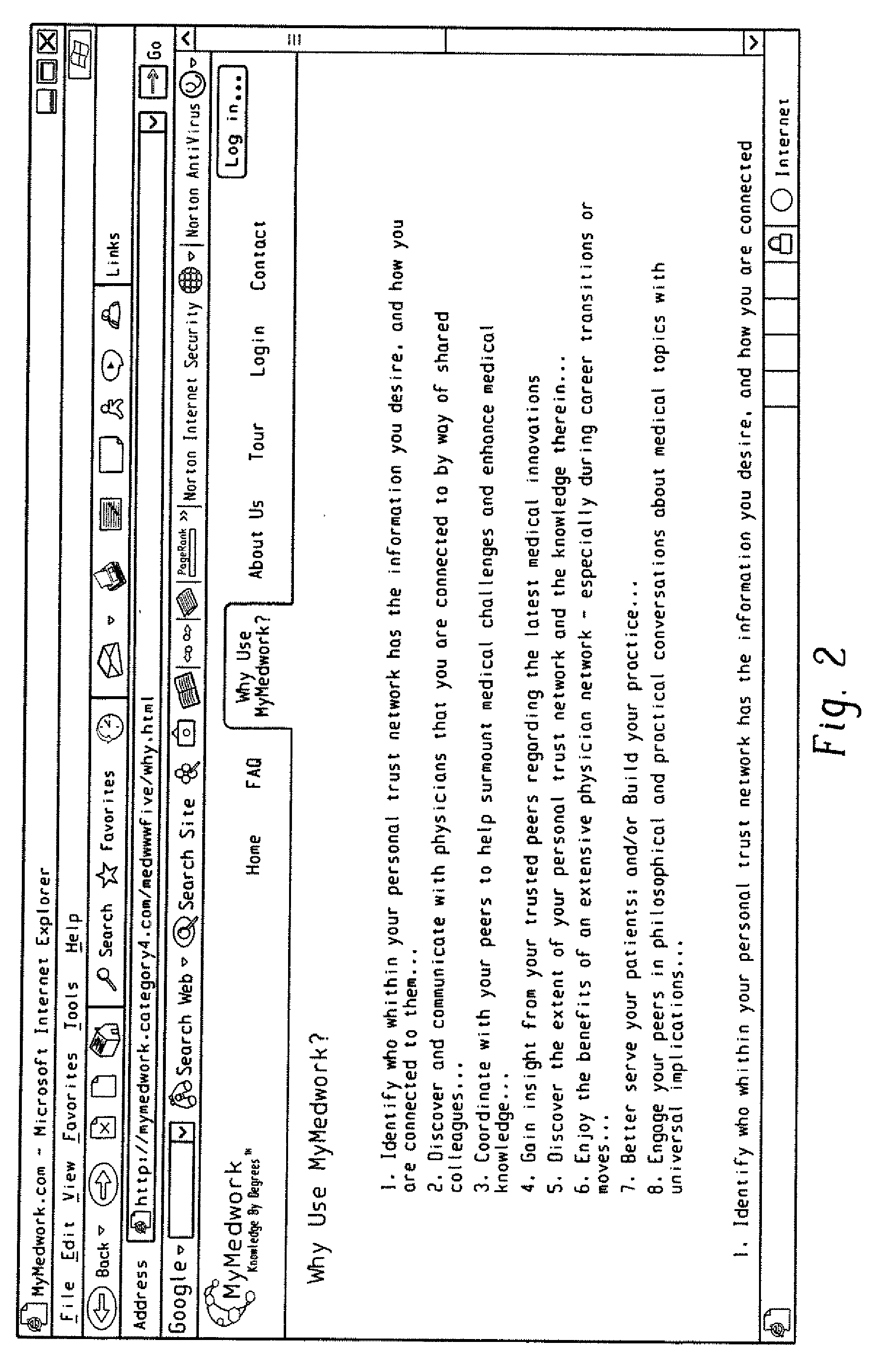Collections of linked databases
a database and linked technology, applied in the field of inferential network making and using, can solve the problems of preventing people from acquiring valid, reliable and useful information they need, preventing people from trusting the reliability of information sources, and affecting the quality of information sources
- Summary
- Abstract
- Description
- Claims
- Application Information
AI Technical Summary
Benefits of technology
Problems solved by technology
Method used
Image
Examples
Embodiment Construction
[0098]This invention is generally directed to a collection or collections of linked databases. An embodiment of this invention is directed to inferential networks and using inferential networks to analyze data generated from directed searches of collections of linked databases. Further, this invention is directed to social-network maps, social-network-map data, and social-network analysis. One embodiment is generally directed to social-network analysis of a personal communication network or personal communication networks. This invention is also directed to systems and methods relating to collections of linked databases. An embodiment of the present invention provides a system for classifying at least one personal communication-network member as an opinion leader in a field of interest based at least in part on personal-communication-network data. An additional embodiment of this invention is directed to performing a directed search of collectively linked databases or nodes in order...
PUM
 Login to View More
Login to View More Abstract
Description
Claims
Application Information
 Login to View More
Login to View More - R&D
- Intellectual Property
- Life Sciences
- Materials
- Tech Scout
- Unparalleled Data Quality
- Higher Quality Content
- 60% Fewer Hallucinations
Browse by: Latest US Patents, China's latest patents, Technical Efficacy Thesaurus, Application Domain, Technology Topic, Popular Technical Reports.
© 2025 PatSnap. All rights reserved.Legal|Privacy policy|Modern Slavery Act Transparency Statement|Sitemap|About US| Contact US: help@patsnap.com



